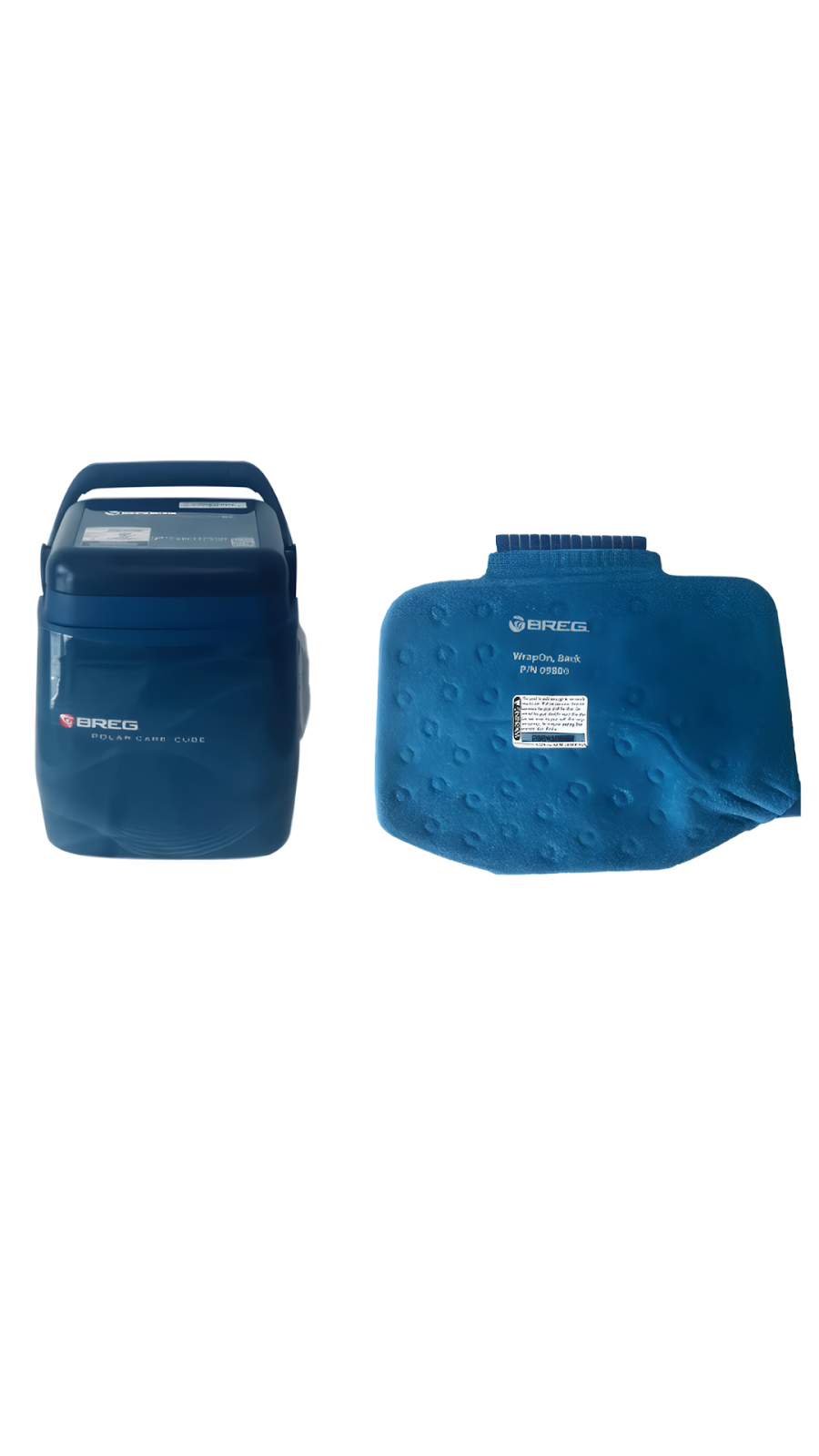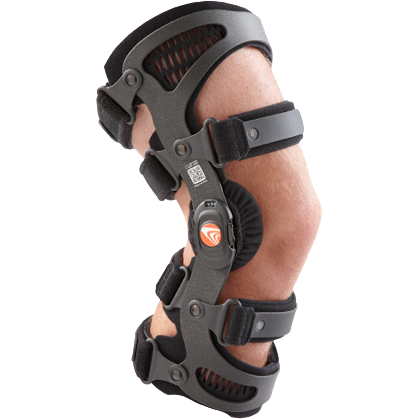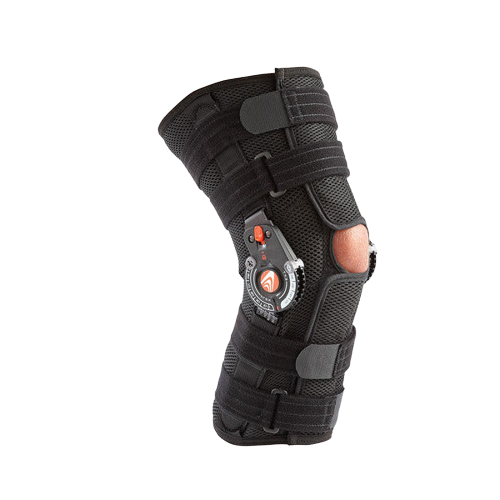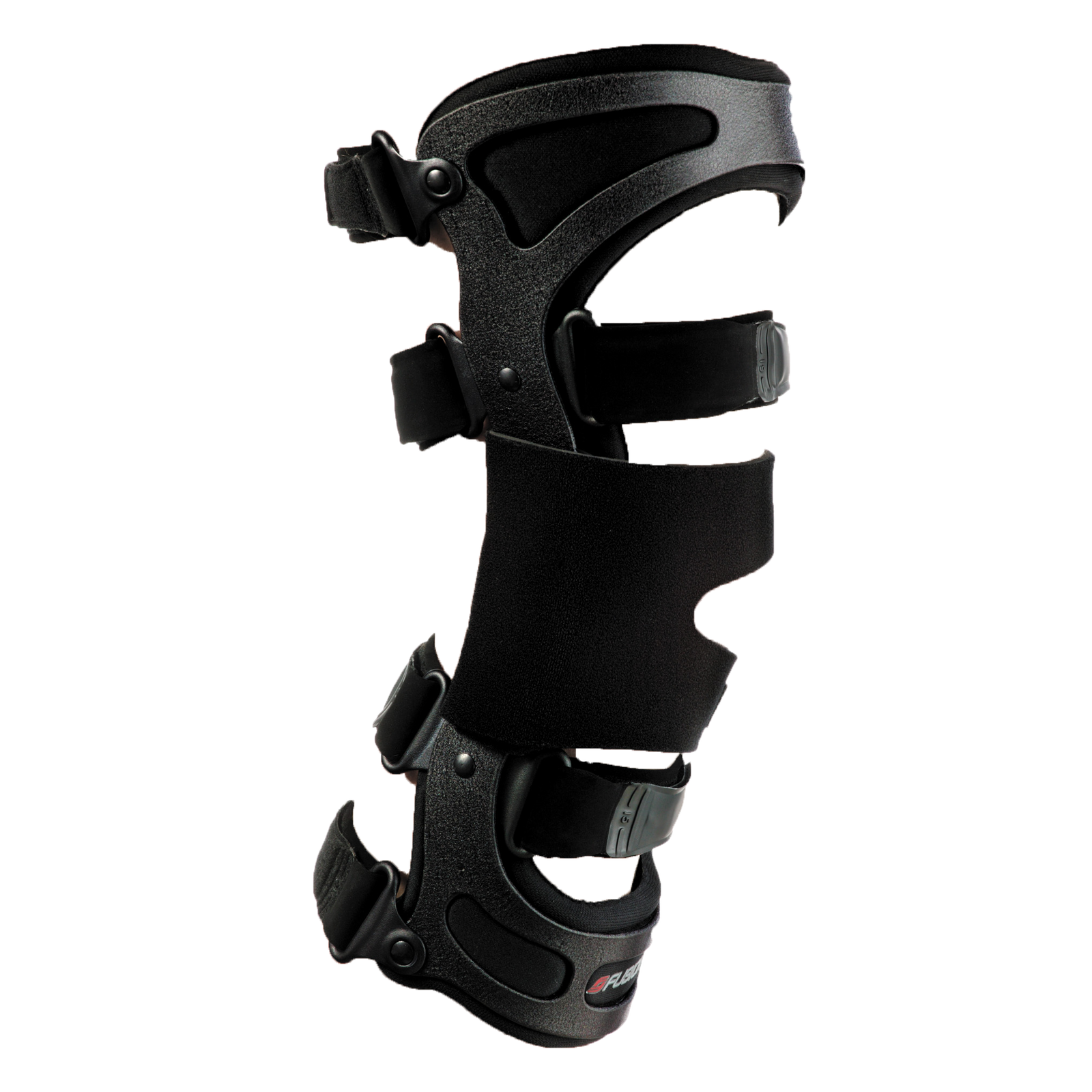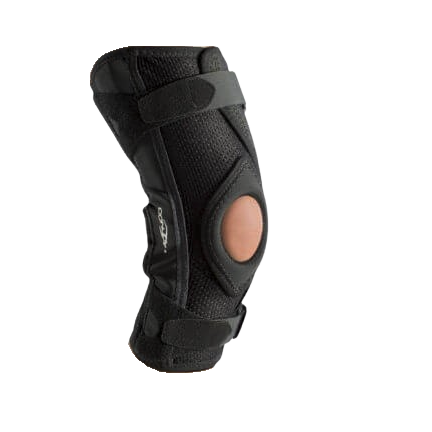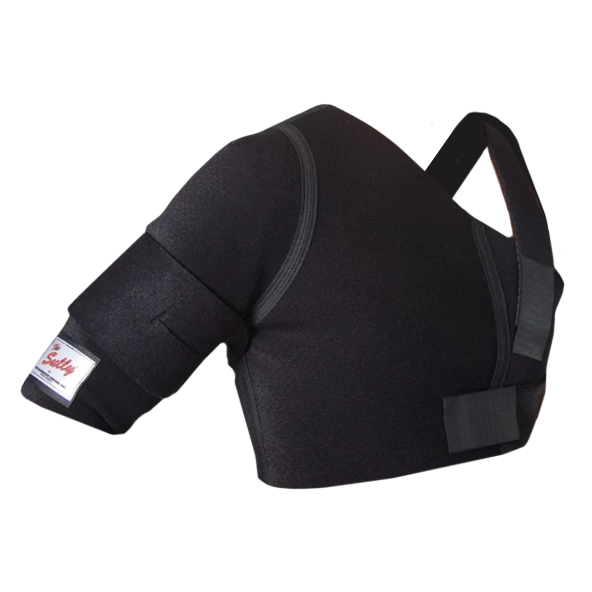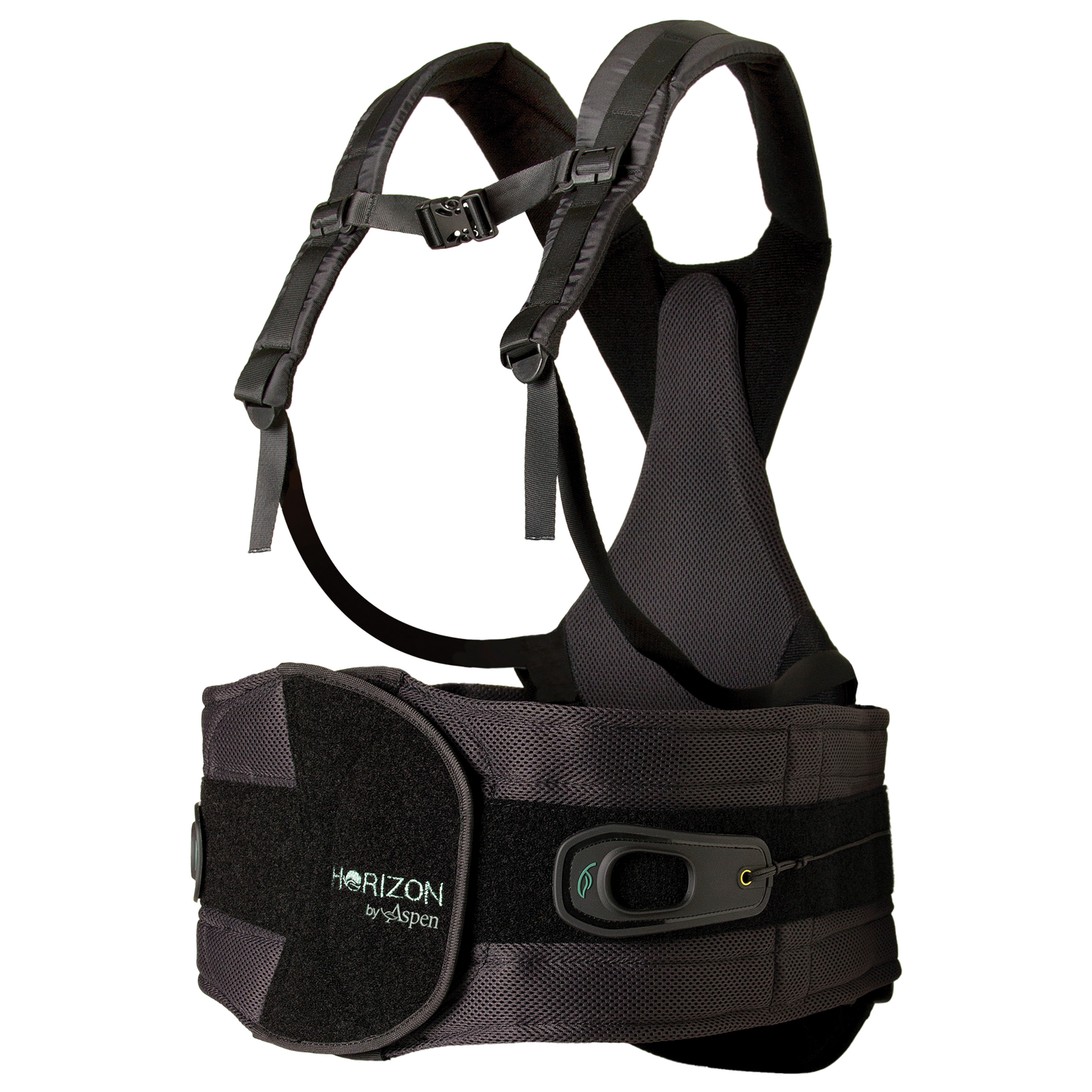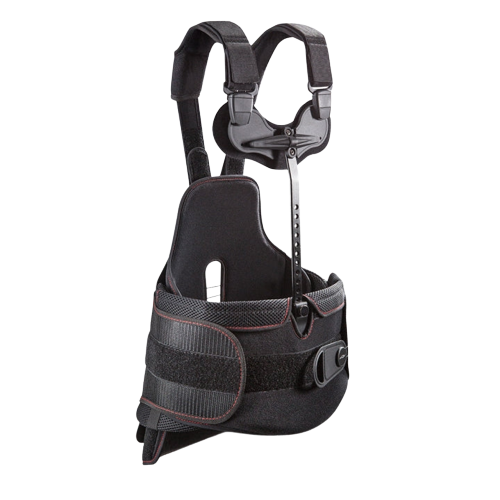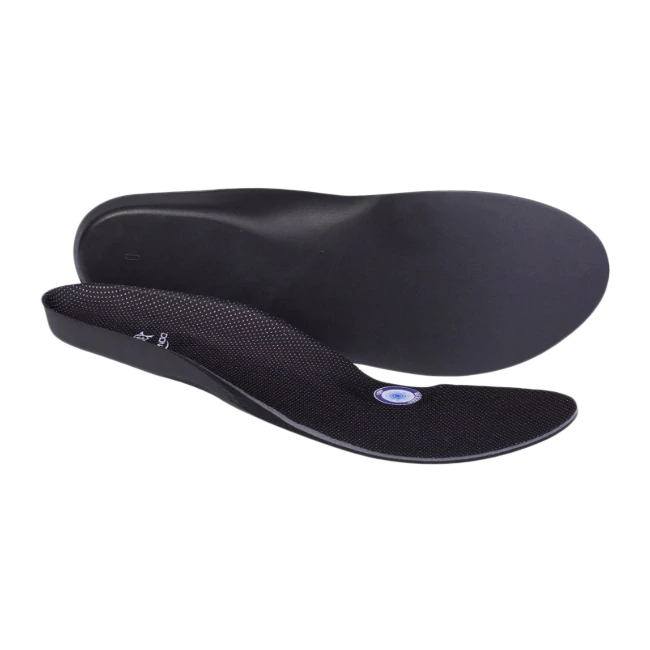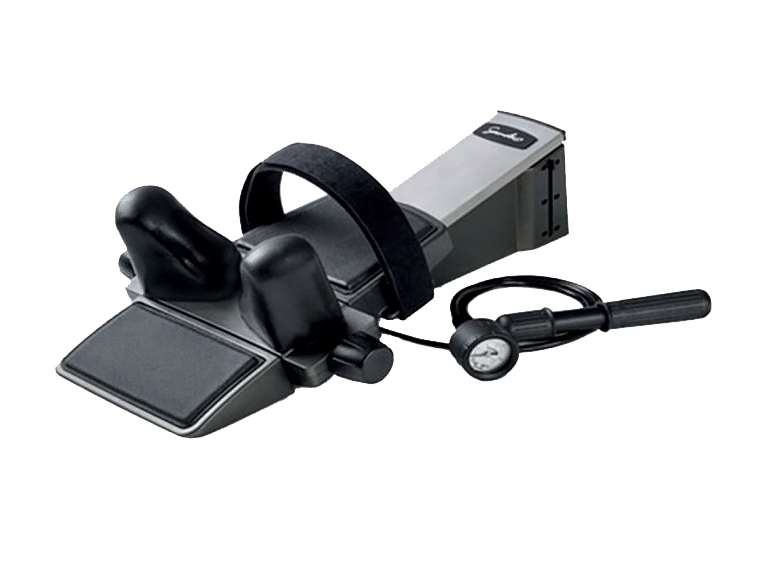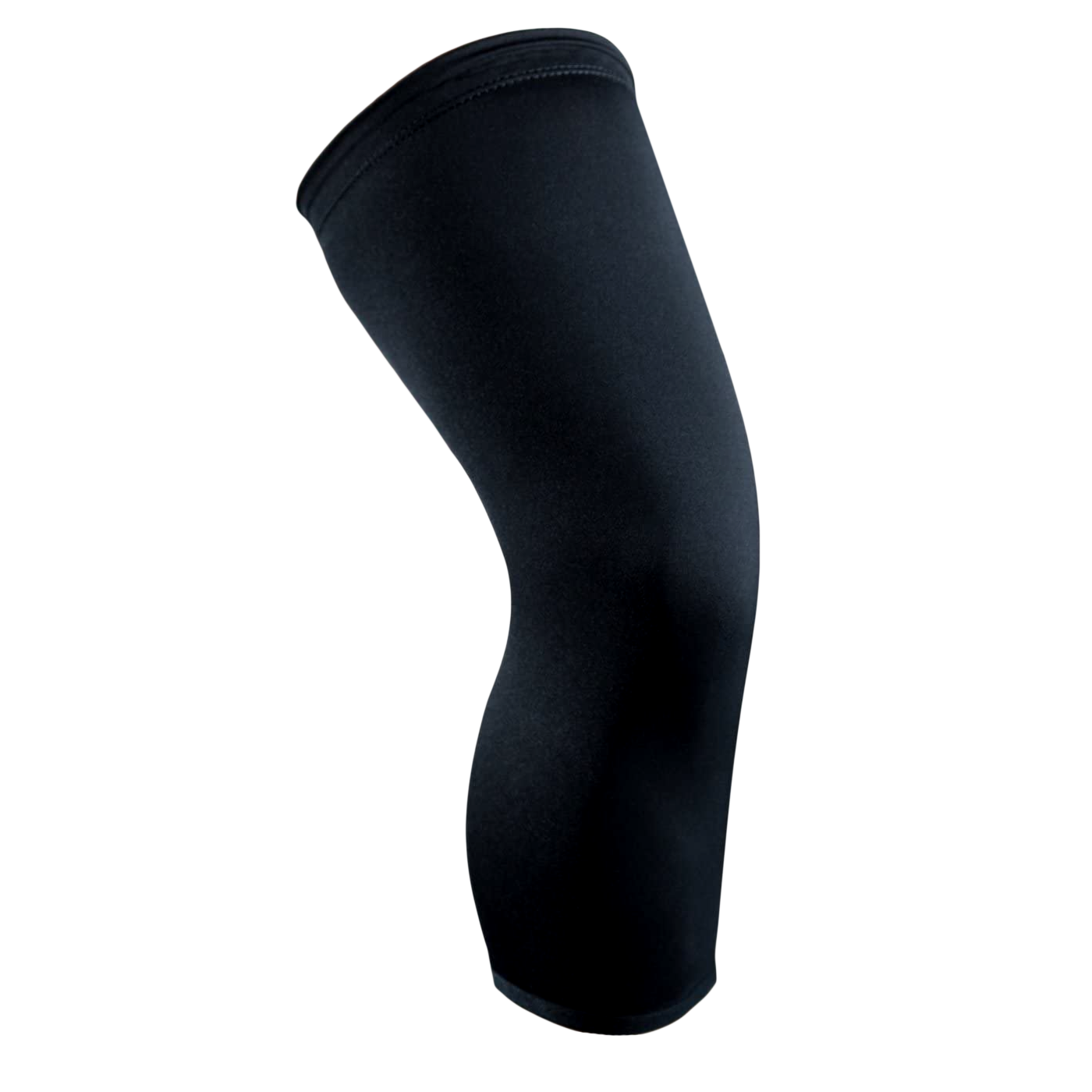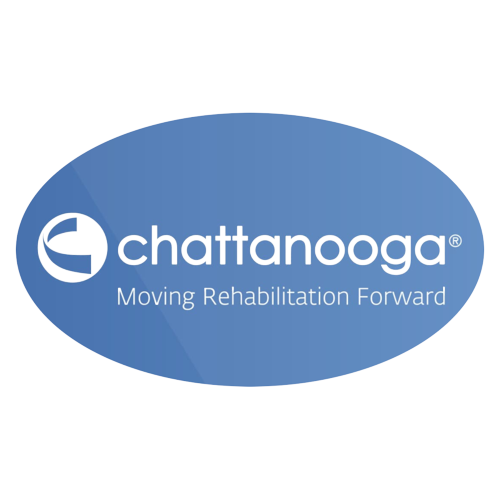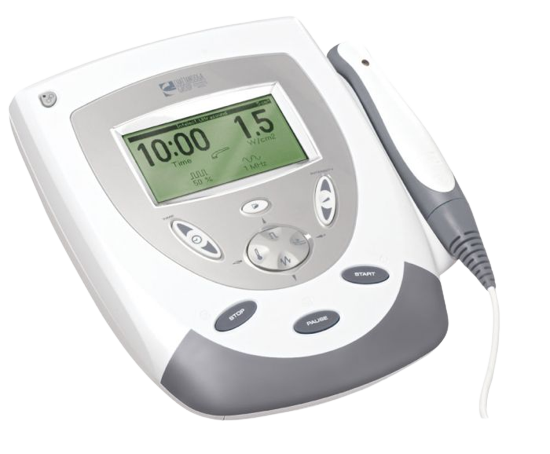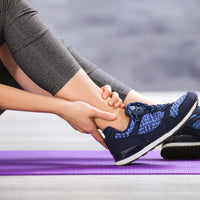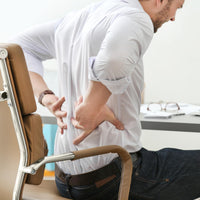
Key Takeaways:
- Reduce Swelling and Inflammation: Cold compression therapy effectively minimizes swelling and inflammation, accelerating post-surgery or injury healing.
- Manage Pain Naturally: This therapy offers a non-pharmacological solution for pain relief, potentially reducing reliance on medication during recovery.
- Enhance Rehabilitation: Cold compression therapy complements physical therapy and other treatment methods, providing pain relief and improving the range of motion for a smoother rehabilitation journey.
At OrthoBracing, we’re dedicated to helping you recover faster and more effectively with the best tools in the industry. One of our top solutions is the Game Ready Cold Therapy machine, which combines cold therapy and active compression to help manage pain, reduce inflammation, and speed up recovery. If you're serious about healing, our selection of cold therapy machines is designed to provide the professional-level care you need.
Cold compression therapy is a powerful and innovative treatment that merges the benefits of cold therapy and compression to reduce swelling, manage pain, and enhance recovery. Whether you’re healing from an injury, surgery, or even a tough workout, this therapy can significantly impact your body’s ability to heal and recover more efficiently. But how does it actually work?
In this article, we’ll dive into the science behind cold compression therapy and its many benefits. You’ll learn how the Game Ready Cold Therapy machine works, why it’s so effective, and how to incorporate it into your recovery plan for faster, more effective healing. Let’s explore how you can make the most of this cutting-edge therapy for your recovery.
What Is Cold Compression And How Does It Work?
Cold compression is a therapeutic technique that involves applying cold to an injured area of the body. It's often used to reduce pain, swelling, and inflammation associated with injuries like sprains, strains, or bruises.
How it works:
- Reduces Blood Flow: When cold is applied to the injured area, blood vessels constrict. This reduces blood flow to the area, helping to limit swelling and inflammation.
- Numbs the Area: Cold can also numb the area, relieving temporary pain.
- Cold Therapy Can Slow Down Tissue Damage by reducing blood flow and inflammation.
When Should You Use Cold Compression Therapy?
Determining the right moment to use cold compression therapy is crucial for enhancing your recovery following orthopedic surgery. This innovative treatment combines the traditional principles of cryotherapy (cold therapy) with static compression, leveraging both benefits to support healing. Cold compression therapy relieves pain, reduces swelling, and promotes faster tissue healing for post-surgery rehabilitation.
Immediate Post-Surgery Period
The moments immediately following orthopedic surgery are critical for employing cold compression therapy. During this period, the body’s natural response to surgical trauma is inflammation, swelling, and pain.
Implementing cold compression therapy soon after surgery can significantly mitigate these responses. The cooling effect reduces blood flow to the affected area, which helps limit swelling and inflammation, while the compression aspect aids in reducing bleeding and fluid build-up.
During Rehabilitation
Rehabilitation is a journey, and cold compression therapy is a valuable companion throughout this process. As you engage in physical therapy and exercises to regain strength and flexibility, cold compression therapy can be used to manage pain and swelling resulting from increased activity levels. After sessions of physical therapy or at the end of a day filled with rehabilitative exercises, applying cold compression therapy can provide soothing relief and contribute to a faster recovery trajectory.
After Experiencing Post-Surgery Flare-ups
Recovery from orthopedic surgery is not always linear. There may be moments of flare-up, where pain and swelling temporarily increase due to overactivity, therapy adjustments, or simply the body’s healing process. Cold compression therapy is an effective tool for managing these flare-ups. By incorporating it during these times, you can help your body navigate the temporary setbacks more comfortably and maintain progress on the path to recovery.
Listen To Your Body And Healthcare Provider's Advice
Ultimately, the most appropriate times to use cold compression therapy will depend on individual circumstances and professional advice. Listening to your body and adhering to the recommendations of healthcare professionals, including surgeons and physical therapists, is paramount. They can provide tailored guidance on the duration and frequency of cold compression therapy sessions to ensure optimal recovery outcomes.
The Key Benefits Of Cold Compression Therapy For Recovery
Cold compression therapy seamlessly combines two elements—cryotherapy and static pressure—to offer a dual approach to managing post-operative recovery and pain relief. This innovative treatment modality is gaining widespread attention among healthcare professionals and patients alike, especially those navigating the recovery journey after orthopedic surgery.
Reduces Swelling And Inflammation
One of the primary benefits of cold compression therapy is its effectiveness in reducing swelling and inflammation. By applying cold temperatures to the affected area, blood vessel constriction (vasoconstriction) occurs, significantly decreasing blood flow to the injured tissues. This process minimizes swelling and helps reduce the inflammatory response, a critical factor in speeding up recovery.
Alleviates Pain
Cold temperatures are known to have a numbing effect on the nerves, which can substantially alleviate pain without needing medication. Cold compression therapy takes this a step further by adding compression, which can help reduce the pain even more effectively. This combination directly addresses the pain and discomfort associated with post-surgical recovery, offering a non-pharmacological option for pain management.
Accelerates Healing
Utilizing cold compression therapy can facilitate a faster healing process. Cold therapy reduces inflammation and swelling, which are barriers to healing, while compression therapy can improve lymphatic drainage and circulation. Improved circulation means more oxygen and nutrients are delivered to the injury site, significantly speeding up tissue repair and recovery.
Reduces Risk Of Complications
By managing swelling and inflammation effectively, cold compression therapy can also minimize the risk of complications that can arise post-surgery, such as deep vein thrombosis (DVT) and lymphedema. The addition of compression supports the body's natural ability to prevent blood clot formation through improved venous return.
Enhances Range Of Motion
Earlier intervention with cold compression therapy post-surgery can improve range of motion. This benefit is particularly important for patients recovering from orthopedic surgery, as stiffness and limited mobility can impede the rehabilitation process. The reduced swelling and pain contribute to a more comfortable and effective path toward regaining mobility.
How To Properly Apply Cold Compression Therapy At Home
Here are steps to apply cold compression therapy at home effectively:
Consult Your Healthcare Provider
Before starting any new treatment at home, it's essential to consult with your healthcare provider. They can guide you on how often and how long you should use cold compression therapy based on your specific condition.
Prepare the Cold Compression Device
Our top-quality brands like AirCast, Breg, Chattanooga, DonJoy, and Exos offer cold compression therapy systems designed for ease of use and maximum recovery benefits. Ensure the compression wrap or pad is clean and ready for use. If your device uses ice, fill it as directed by the manufacturer. For systems requiring water, ensure it's at the recommended temperature.
Position Yourself Comfortably
Find a comfortable position where you can relax while applying the therapy. Elevating the affected area is usually recommended to further help reduce swelling.
Apply the Cold Compression Wrap
Carefully wrap the affected area without putting undue pressure on it. Make sure it's snug but not too tight. The goal is to apply sufficient compression to aid in reducing swelling but not so much that it becomes uncomfortable or restricts blood flow.
Monitor Duration
While our devices are designed for safety and comfort, it’s important to use them for the appropriate length of time to avoid skin damage or other issues. Although specific durations vary depending on the device and the injury, a general guideline is to use cold compression therapy for 15-20 minutes, repeated several times a day. You should always follow the guidance of your healthcare provider regarding duration and frequency.
Take Breaks Between Sessions
Allow your skin and body to return to its normal temperature and sensation before reapplying. This usually means waiting at least 1-2 hours between sessions. Listening to your body is crucial; if you experience discomfort, you must pause and consult your healthcare provider.
Care For Your Device
After each use, follow the manufacturer’s instructions for cleaning and storing your cold compression therapy device to ensure it remains in perfect condition for your next therapy session.
Safety Considerations And Precautions
When embarking on a recovery journey with cold compression therapy, safety should be at the forefront of any treatment plan. This innovative therapy combines the benefits of ice therapy and compression to help reduce pain and swelling and accelerate the healing process following orthopedic surgery. However, to ensure a beneficial and safe recovery, several vital considerations and precautions must be kept in mind.
Duration Of Use
It is crucial to adhere to the recommended durations for each cold compression therapy session. Overexposure to cold can cause skin irritation or, in severe cases, frostbite. Typically, a session lasts 15 to 20 minutes, but it's important to follow the guidance of a healthcare provider to tailor the duration to your specific needs and recovery stage.
Skin Protection
Always protect your skin by using a barrier between the cold source and your skin. This could be a simple cloth or a specific protective pad provided with the cold compression device. This precaution helps prevent skin damage while allowing the therapeutic benefits of the cold and compression to aid your recovery.
Sensory Check
Regularly check the area being treated for any changes in sensation. If you notice any numbness, tingling, or increased pain, or if the area becomes too cold, stop the therapy immediately. These could be signs of nerve irritation or damage from excessive cold exposure.
Follow Professional Guidance
Consult a healthcare professional before starting cold compression therapy, especially after surgery. They can provide a treatment plan that considers your surgery type, recovery stage, and individual health status. This personalized plan will help ensure that cold compression therapy aids in your recovery without causing harm.
Stay Informed
Educate yourself on using your cold compression therapy device correctly. This includes understanding how to securely apply the compression wrap and set it for a safe amount of compression and knowing how to fill and maintain the cold therapy unit to ensure it delivers consistent therapeutic cold.
Combining Cold Therapy With Other Treatments
Cold compression therapy is a powerful recovery method that uses cold temperatures combined with pressure to reduce inflammation and alleviate pain. Integrating cold therapy with other treatments can enhance recovery and improve overall results. Here’s how to effectively combine cold therapy with various treatment methods.
Cold Therapy And Physical Therapy
- Complementary Approach: Cold therapy before physical therapy sessions can reduce swelling and numb pain, making it easier to perform rehabilitation exercises.
- Post-Session Recovery: After physical therapy, applying cold therapy can help minimize any soreness from the exercises.
Cold Therapy And Compression
- Enhanced Benefits: Cold compression therapy combines the benefits of cold therapy and compression, which can further reduce swelling and support injured areas.
- Targeted Treatment: This dual approach can be particularly effective for sports injuries, sprains, and post-surgical recovery, offering pain relief and stability.
Cold Therapy And Medication
- Pain Management: If prescribed anti-inflammatory medication or pain relievers, using cold therapy can enhance their effectiveness. Cold can reduce the need for higher doses of medication.
- Timing is Key: Take medications as directed and use cold therapy to manage acute pain episodes or after medication has been taken for optimal relief.
Cold Therapy And Massage
- Increased Efficacy: Combining cold therapy with massage can help relax tight muscles while reducing inflammation in the area.
- Order of Treatment: Start with cold therapy to decrease inflammation, then follow with massage to improve circulation and facilitate healing.
Cold Therapy And Stretching
- Warm-Up Benefits: Before engaging in stretching exercises, use cold therapy to decrease pain, making it easier to perform stretches.
- Post-Activity Recovery: Applying cold therapy can help soothe muscle soreness and prevent stiffness after stretching or exercise.
Is Cold Compression Therapy Right For You? Key Considerations
Cold compression therapy can be a valuable tool for managing pain, swelling, and inflammation associated with injuries. However, several factors should be considered before incorporating it into your recovery plan.
When To Consider Cold Compression:
- Acute Injuries: Cold therapy can be beneficial for sprains, strains, bruises, and post-surgery swelling.
- Pain and Inflammation: Cold therapy may provide relief if you're experiencing significant pain or inflammation.
- Limited Mobility: Cold therapy can help reduce swelling and discomfort, allowing for an increased range of motion.
When To Avoid Cold Compression:
- Chronic Conditions: Cold therapy may not be suitable for chronic pain or conditions requiring increased blood flow.
- Circulation Problems: Individuals with poor circulation or peripheral vascular disease should exercise caution when using cold therapy.
- Numbness or Tingling: If you experience numbness or tingling in the injured area, discontinue cold therapy and consult a healthcare professional.
- Allergic Reactions: Some individuals may be allergic to cold therapy materials.
Before Starting Cold Compression:
- Consult a Healthcare Professional: If you have any underlying health conditions or concerns, consult with a doctor before using cold therapy.
- Follow Instructions: Adhere to the recommended application time and frequency to avoid adverse effects.
- Monitor for Discomfort: Pay attention to your body's signals and discontinue cold therapy if it causes pain or discomfort.
Potential Side Effects And When To Avoid Cold Compression
While cold compression therapy is widely recognized for its benefits in speeding up the recovery process following orthopedic surgery, it's important to be aware of potential side effects and situations in which cold compression may need to be avoided.
Potential Side Effects
When applied correctly, cold compression therapy is a safe method for managing post-surgical pain and swelling. However, like any therapeutic intervention, it can have side effects if not recommended. Potential side effects include:
- Skin Irritation or Frostbite: Direct exposure to extreme cold for a prolonged period can lead to skin irritation or even frostbite. Always use a barrier, such as cloth, between the cold source and the skin and adhere to recommended lengths of time for application.
- Nerve Damage: Excessive cold can lead to nerve damage, manifesting as numbness or a tingling sensation. If you experience these symptoms, cease therapy immediately and consult your healthcare provider.
- Compromised Circulation: Overusing cold therapy in one area can decrease blood flow, which is counterproductive to healing. It is crucial to limit the duration of each therapy session and allow time for normal blood flow to resume between sessions.
When To Avoid Cold Compression
Although cold compression is beneficial for many individuals recovering from orthopedic surgery, there are certain conditions under which its use should be avoided:
- Conditions Involving Circulatory or Sensory Disorders: Individuals with diseases that affect blood flow or sensation, such as diabetes or peripheral artery disease, should avoid cold compression therapy unless under direct medical supervision.
- Raynaud's Phenomenon: Patients with Raynaud's Phenomenon experience abnormal responses to cold, with reduced blood flow to extremities. They should not use cold therapy.
- Open Wounds or Infections: Applying cold compression over open wounds or areas with infections can exacerbate the condition and hinder healing.
- Severe Hypertension: Very cold temperatures can cause blood vessels to narrow, which may increase blood pressure. Patients with severe hypertension should consult their doctor before using cold compression therapy.
It's always recommended to consult with a healthcare professional before starting any new therapy, especially after orthopedic surgery.
Final Thoughts
Cold compression therapy is a powerful recovery tool that can help alleviate pain, reduce swelling, and accelerate healing after injuries or surgery. By understanding its mechanics and benefits, you can make informed decisions about incorporating this therapy into your recovery routine. Always listen to your body and consult healthcare professionals for tailored guidance. Embracing cold compression therapy may be the key to returning to your best self faster.
Our company is dedicated to supporting your recovery journey by offering the industry's highest-quality brands, including AirCast, Breg, Chattanooga, DonJoy, and Exos. These brands represent the pinnacle of cold compression therapy technology, offering customized solutions catering to individual recovery needs. With a focus on providing durable, practical, and user-friendly products, we ensure that your path to healing is equipped with the best resources.
Embracing cold compression therapy as part of your recovery strategy aligns with our commitment to delivering top-tier solutions for orthopedic surgery recovery and pain relief. Trust in the power of advanced therapeutic techniques and high-quality products to regain strength, flexibility, and peace of mind during your recovery journey. Your optimal recovery is our paramount concern, and through the integration of cold compression therapy, we stand by your side every step of the way.
Read also:
- The 7 Best Cold Therapy Machines for Faster Recovery Times
- How To Use An Ice Machine For Knee: Step-By-Step Guide
- How Long to Use Cold Therapy After Surgery
Frequently Asked Questions About What Is Cold Compression Therapy
What injuries can be treated with cold compression therapy?
Cold compression therapy can effectively treat a wide range of injuries, including sprains, strains, muscle tears, and joint injuries. It is particularly beneficial for reducing swelling and pain in soft tissue injuries.
How long should cold compression therapy be used after an injury?
The duration of cold compression therapy varies depending on the severity of the injury and the individual's response to the treatment. Typically, for acute injuries, therapy sessions might last 15 to 20 minutes at a time, several times a day. It's important to follow healthcare professional advice on the length of therapy for optimal recovery.
Can cold compression therapy reduce inflammation?
Yes, cold compression therapy is highly effective in reducing inflammation. The cold temperature narrows blood vessels, which decreases blood flow to the injury, thus reducing swelling and inflammation. When combined with compression, it further enhances the therapeutic benefits by limiting edema and bruising.
Is cold compression therapy suitable for post-surgery recovery?
Yes. Cold compression therapy is particularly suitable for post-surgery recovery. It helps manage pain, reduce swelling, and accelerate healing. Many healthcare professionals recommend its use after orthopedic surgeries to improve outcomes and decrease recovery time.
Can cold compression therapy help with sports injuries?
Cold compression therapy is a preferred treatment option for sports injuries. It helps reduce pain and swelling and speeds up the recovery process, enabling athletes to return to their sport faster. Regular use following an injury can significantly enhance recovery and performance.
Is cold compression therapy better than ice packs?
While cold compression therapy and ice packs are used for cold therapy, cold compression therapy offers additional benefits. The combination of cold therapy and compression provides a more profound and efficient treatment for pain and swelling than traditional ice packs. Cold compression therapy delivers consistent therapeutic cold while applying optimal compression, enhancing recovery.

